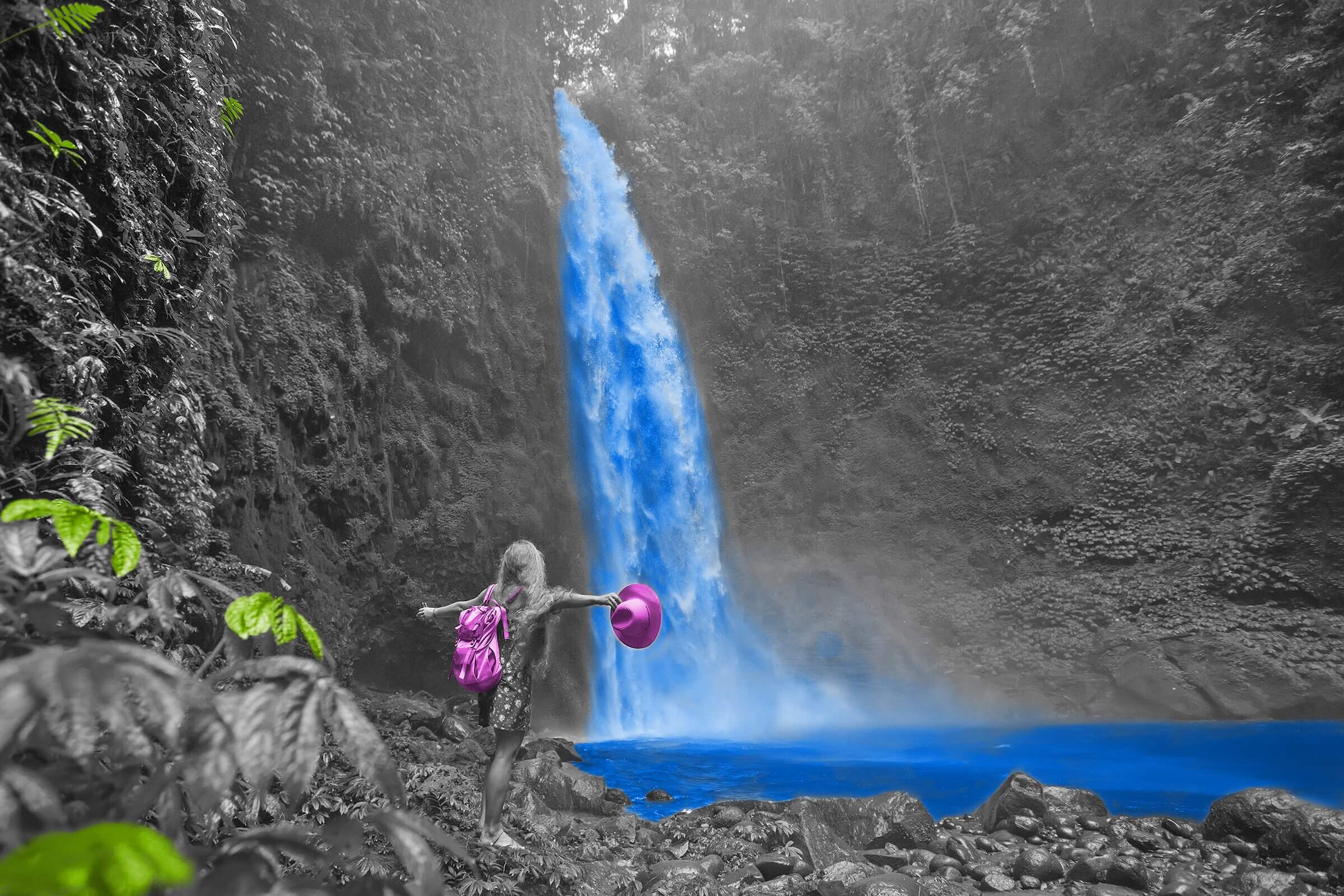

Waterfalls are still a scientific enigma. Though people have admired their beauty and power for millennia, only in the last few decades have geologists focused on the forces that give rise to them and the unique ecosystems they support. Here’s the word on waterfalls, from the science behind them to their impact on art, culture, and industry.
Not All Water That Falls Is a Waterfall

You might think that all it takes to create a waterfall is hydrogen, oxygen, and gravity, but not every downward-flowing stream fits the bill. One guidebook suggests a waterfall is “a more or less vertical stream of water that flows over the edge of a cliff that has eroded away.” Water flowing over uneroded rocks, meanwhile, is considered a rapid. In addition, most experts agree that a fall has to be a minimum of 5 feet tall to qualify as a waterfall, and it needs to be fed by a stream, river, or creek that is replenished at least annually, such as by rain or melting snowpack.
Waterfalls Create — And Are Caused by — Erosion

Scientists used to believe that waterfalls were caused only by external geological or climate forces, but recent research has demonstrated that waterfalls can actually create themselves. Streams and rivers erode the rock over which they flow unevenly, and carve paths of least resistance over the landscape. Whether it’s washing across vertical or horizontal planes, water wears away soft rock like limestone and shale faster than hard rock like granite or basalt. Eventually, all that’s left is hard rock in ledges, steps, or walls, which creates the topography for a waterfall.
Waterfalls Can Be Categorized by Structure

The beauty of waterfalls lies in the way they flow over varying kinds of terrain, and many can be categorized according to their structure. Among the most scenic are plunge waterfalls, such as Bridalveil Fall in Yosemite National Park, which flows over a cliff without making contact with vertical rock. Tiered waterfalls flow over consecutive ledges of rock; Kaaterskill Falls’ two dramatic drops inspired painters of the Hudson River School in the early 19th century. A block waterfall, like Niagara Falls, occurs when a massive river flows over a cliff in a giant sheet. Horsetail falls make some contact with the vertical rock behind them and create picturesque sprays as they flow downward. Makahiku Falls in Maui, Hawaii, is one spectacular example. Other types include cataracts, sluices, fans, and waterslides.
The World’s Largest Waterfall Is Underwater

Earth’s biggest waterfall is under the surface of the Denmark Strait, the waterway separating Iceland and Greenland. How, you might be asking yourself, can a waterfall form completely underwater? The answer is in part a quirk of geomorphology — namely, a troughlike formation in an oceanic mountain range. Because cold water currents are denser than warm water currents, they sink downward, and in this particular spot cold water collects in the trough. Eventually, it overflows the rim of the trough and then sinks downward against the mountainside — and boom, underwater waterfall. The rim, called the Denmark Cataract, is 11,500 feet tall, making this waterfall at least three times as tall as its tallest counterpart on land.
There Are Some Pretty Big Waterfalls on Land, Too

Among land-based falls, Angel Falls in Venezuela takes the crown. Known as Kerepakupai Merú in the Indigenous Pemon language, the waterfall plunges 2,648 feet in a continuous flow from the Auyan Tepui sandstone plateau in Canaima National Park. (A 1949 National Geographic Society expedition calculated the falls’ height at 3,212 feet, but the measurement methods are disputed.) The falls are so tall that the huge volume of water surging from on high vaporizes before reaching the ground.
Most waterfall surveyors consider Angel Falls to be the tallest uninterrupted waterfall on Earth, but some argue that Tugela Falls, in South Africa’s Drakensberg Mountains, supersedes it, with a height that may be 3,225 feet over at least five segments. And then there’s Victoria Falls (also called Mosi-oa-Tunya), along the Zambezi River bordering Zimbabwe and Zambia, which is considered the world’s largest sheet of falling water. It maxes out at only 344 feet tall, but it’s more than a mile wide.
Waterfall Tourism Was a Thing in the 18th Century

Tourists flocking to famous falls didn’t start with the thousands who show up for “firefall” in Yosemite (when the setting sun in February appears to set Horsetail Fall on fire) or even with newlyweds at Niagara. European travelers of the Romantic era — roughly the late 18th century to the 19th century — also made a point of visiting especially scenic waterfalls, which they saw as paragons of the sublime. The waterfalls at Tivoli near Rome inspired tourists as well as moody, atmospheric paintings. The Marmore Falls near Terni in Italy — constructed by Roman engineers in 271 BCE, and at 541 feet the tallest human-made waterfall in the world — was one of the most popular stops on the Grand Tour. Romantic-era artists such as John Sell Cotman and J.M.W. Turner in Europe, as well as the Hudson River School members in the U.S., painted scenes of waterfalls that increased the public’s thirst for landscape beauty.
A Waterfall Fueled America’s Industrial Revolution

In the 1790s, Alexander Hamilton established the United States’ first planned industrial town around the Great Falls of the Passaic River in New Jersey. Hamilton envisioned the city of Paterson as a hub of American industry, with unlimited hydropower drawn from the falls. Over the next several decades, state-of-the-art mills and factories producing cotton, paper, silk, munitions, and railroad machinery opened, reaching peak productivity in the 1890s. Today, the old manufacturing sites and the waterfall make up the Paterson Great Falls National Historical Park, which honors the city as one of the birthplaces of the American industrial revolution.
